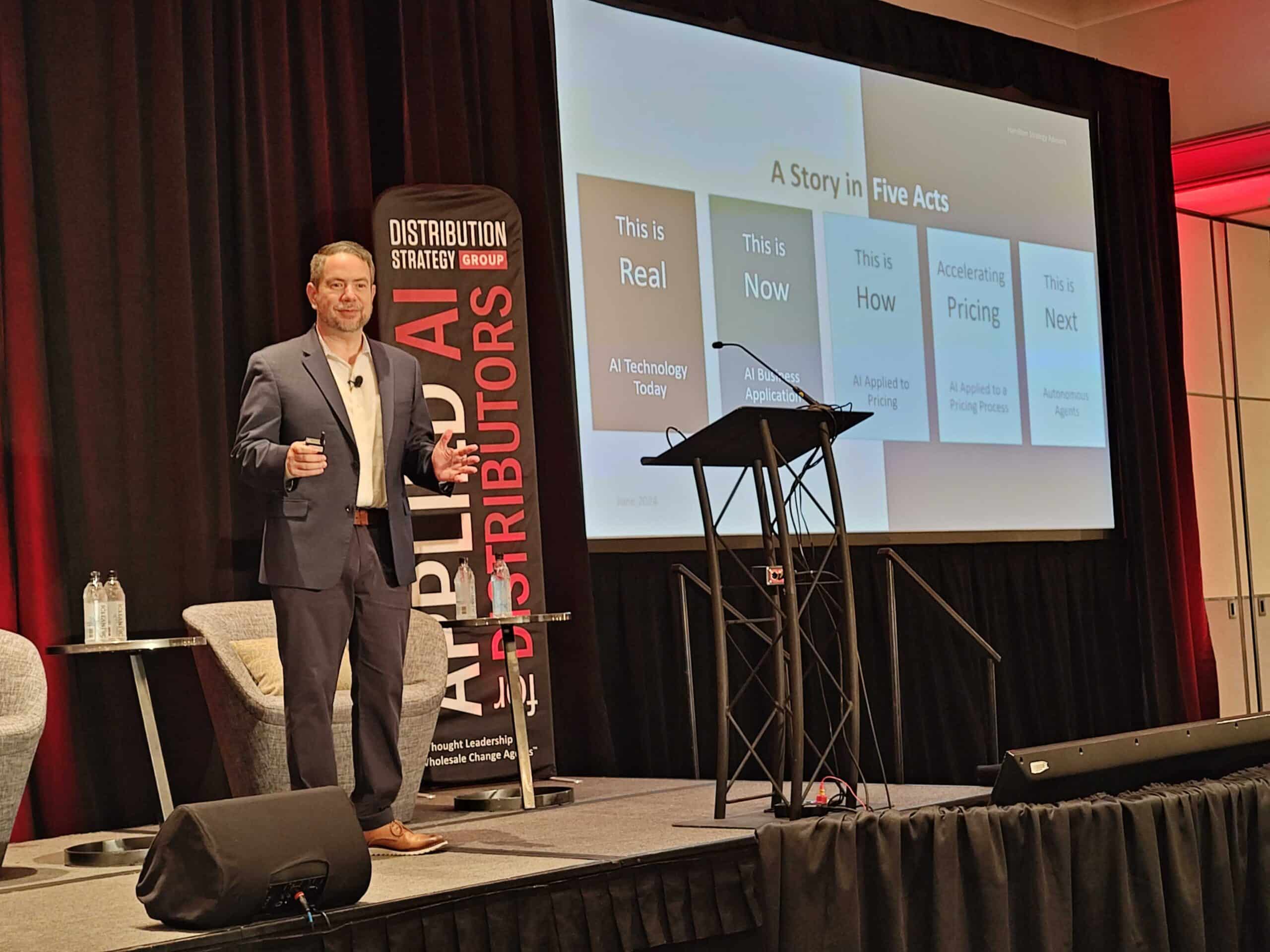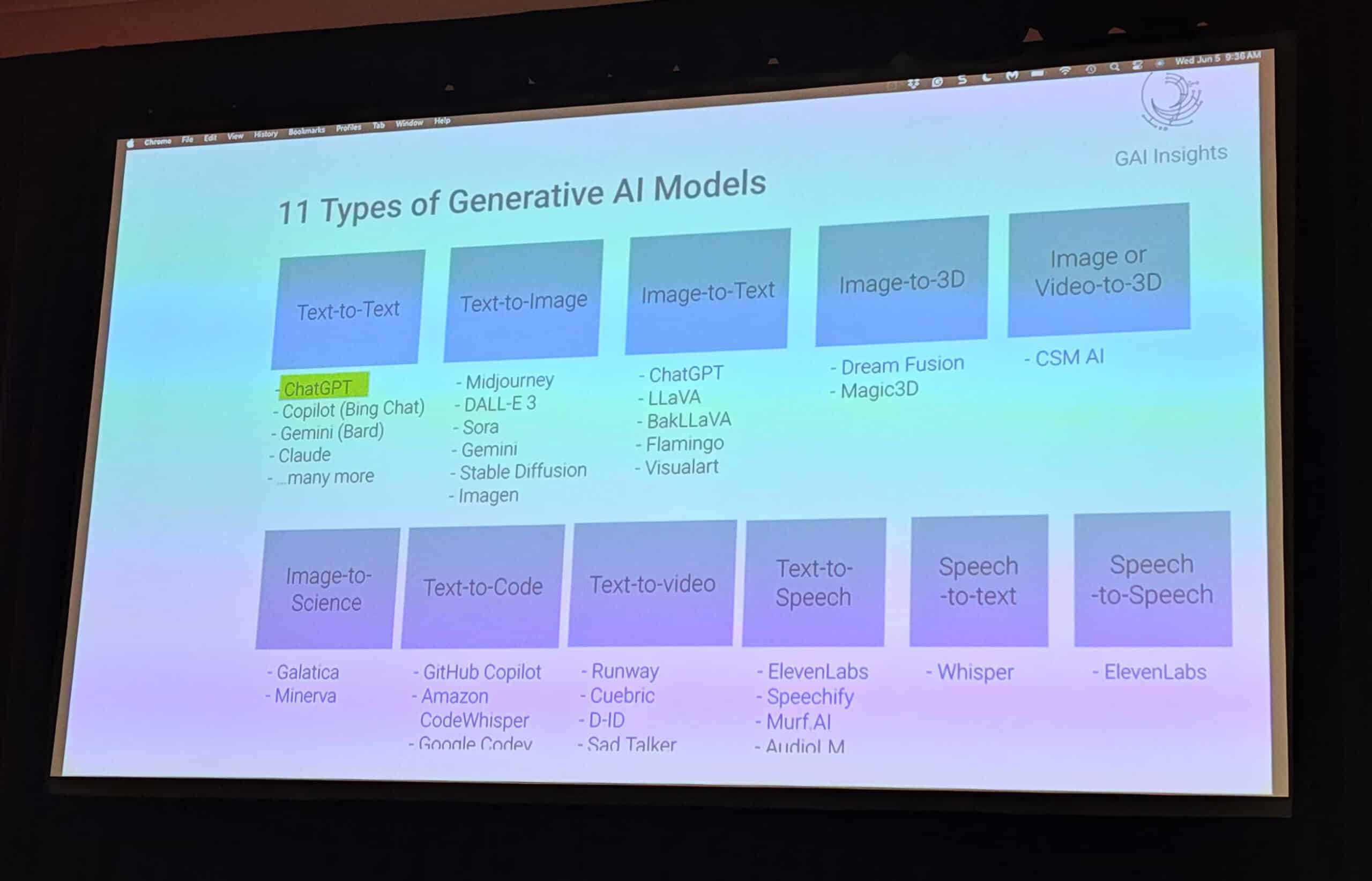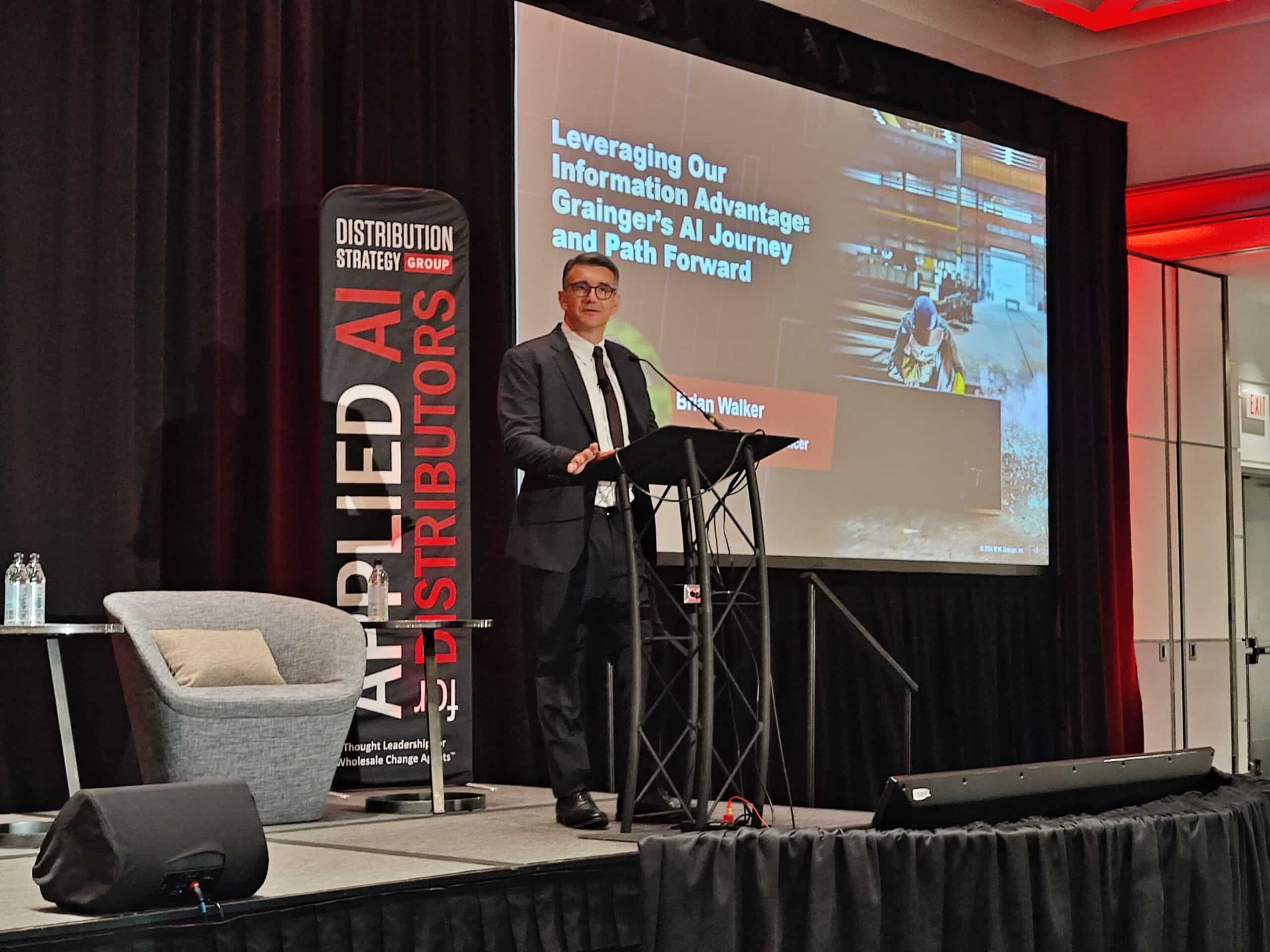On day two of our Applied AI for Distributors event this week in Chicago, distributors seemed cautiously optimistic about applying AI in their businesses. However, the fear of the unknown and knowing how to get from overwhelm to action were still top of mind.
As we mentioned yesterday, the AI technology you use today is the worst version you’ll ever use. It’s only going to get better from here, said Brooks Hamilton, founder of Hamilton AI Strategy Advisors, in his session, “Driving Profit Growth with AI.”
Make no mistake. AI is very real. And it’s not going away.
Here are some takeaways from day two of our event focused on AI for distributors.

As AI models scale, so do their capabilities.
To illustrate how far AI models have advanced in handling text, vision, audio and reasoning, Hamilton shared audio of a sales negotiation. The audio featured an AI model having a call with a trucking company to see if they’d take a load. Not only did the AI hold transactional conversations with a person, evaluate what the person said and respond, it negotiated price.
Paul Baier, CEO of GAI Insights, said: “These tools are limited by our imagination. They are not limited by technology.”
Determine what tasks in your business can be automated, augmented or left as is.
Every role in your company is composed of multiple tasks. Hamilton said the potential AI impact will differ by role.
For example, Accenture Research found that 57% of office and administrative support tasks could be automated, while only 16% of maintenance and repair tasks could. Every distributor should review each role’s tasks to determine what can be:
- Automated
- Augmented
- Left as is
Hamilton said the cost of AI is constantly falling, and carefully analyzing and acting on what can be automated can translate to real cost savings.
You don’t need to understand how AI works to use it in your business.
Baier referred to generative AI, such as ChatGPT, as the “power tool for knowledge work.” He said anyone who knows how to use Google can write a GenAI prompt and use the tools. It costs nothing to get started and there’s an immediate, obvious benefit.
Distributors can use any of the 11 types of generative AI models to:
- Add GenAI capability to products that generate revenue
- Make business process improvements
- Improve individual employee productivity

AI adoption requires an evolution of your culture and operating model.
Grainger started its latest wave of digital transformation in 2017, said Brian Walker, the company’s Chief Product Officer. In Grainger’s case, that meant building custom software in pursuit of providing customers with:
- An easy, flawless customer experience
- Tangible value to their businesses
To succeed, Grainger had to transform its talent profile to support its digital transformation. “Digital transformation is people transformation.”
In the past three years, Grainger has quadrupled its AI/machine learning team, and Walker doesn’t see that investment rate changing. He said the investment drives:
- Cross-functional teamwork and a data-driven culture
- The development of a workforce with differentiable skills
- The opportunities for team members to take ownership and work on projects with broad-reaching impacts

Commit to responsible deployment of machine-learning models.
Because there are still kinks to be worked out when deploying large language models, distributors need to be responsible in AI’s deployment.
For example, at Grainger, they put humans in the loop to catch the feedback they need to train the models and improve the data. This ensures customers aren’t suffering because they’ve been negligent in managing and maintaining their models.
When you buy instead of build your AI solutions, don’t fall for the shiny features.
Many smaller distributors don’t have the kind of scale or resources that Grainger has. So, they are going to be buying more AI solutions than building. Instead of falling for the slick features, Walker suggests going a step deeper to make sure the fundamental business process that underpins the application matches your context.
How can distributors begin?
Baier said distributors must assess urgency with the WIN framework: Words, Images, Numbers and Sounds. Evaluate how much of your cost base is made up of WINS work, and how digitized WINS inputs are today in your business. According to Baier, customer service and marketing are examples of departments with high levels of WINS work.
Then decide on a strategy. Are you an AI leader, or a slow or fast follower? Remember to only focus on one to two uses cases that can deliver ROI in a nine- to 12-month period.
Grainger’s first entry into AI was taking control of its end-to-end search experience. They now have a custom cloud-based solution for search across their entire product line. Grainger’s journey with search allowed them to quickly embrace large language models.
When you “stop the talking, start doing,” Walker said, team members will overcome the fear they may have about adding AI to their workflows. When they see how AI can make them more efficient, helpful and effective for customers, they’ll get excited.
Did you miss our first recap? Check it out here: Takeaways from 2024 Applied AI for Distributors Day 1: Enter the AI Race and Embrace the Future


